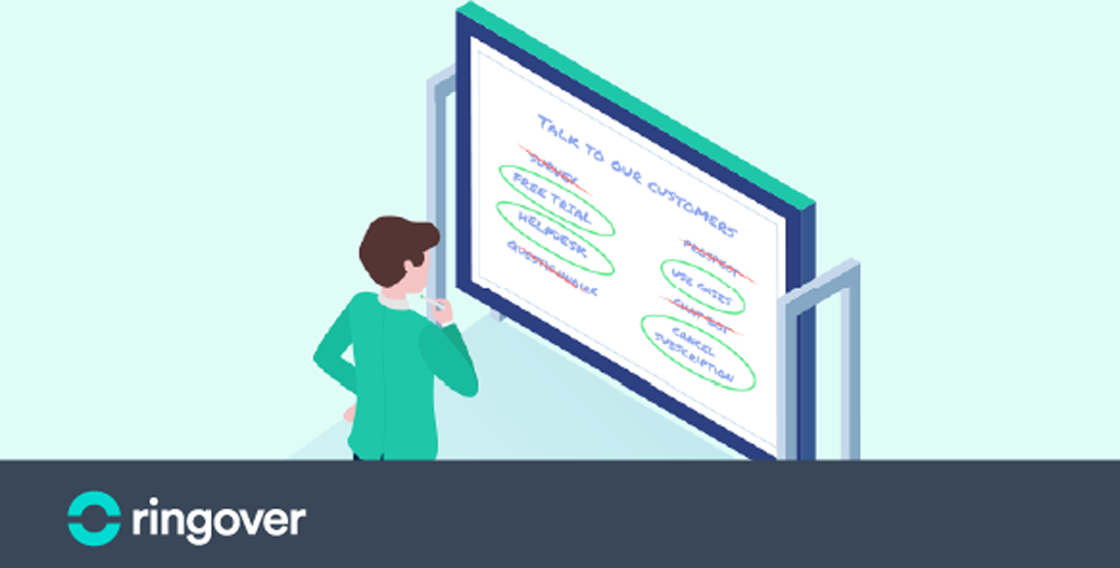Summary
In a past article we discussed the importance of having (and displaying!) a dedicated phone number for your business. In this article we’ll address the key points of contact with your clients as well as how to best use them for your business. How and when to call your clients? 4 winning strategies for talking to your clients
1. DURING A FREE TRIAL
Offering a free trial period is a good strategy for reassuring your potential clients and convincing them to test your product. This is your chance to help them get started, discover the features that they’ll find useful, and to be available to them before the free trial period ends. For Hubstaff, their free trial period plays a very important role in their acquisition strategy. Their marketing team works regularly to improve the experience of clients and increase their rate of conversion. A free trial is the ideal occasion to speak to your clients:- At the beginning of the free trial, to assist them with putting the tool to use - During the free trial, to make note of their comments and opinions- At the end of the free trial, to convince them to sign up or understand their reasons for leavingYou can alternate between email and the phone, so as not to besiege them with calls. But don’t forget that the live voice helps to enrich conversations and holds more power of persuasion. #freetrial is the ideal occasion to speak to your clients and sign them on
2. TO WRITE A USE CASE
Testimonials, use cases, success stories, and other client references comprise key content for guiding your prospects in their decision-making process. These allow them to better understand the relationship between your product and their needs, and reassure them about their choice. To write an effective use case:1. Select a satisfied and committed client - high use rate, high score on satisfaction surveys2. Identify a win-win angle in terms of visibility for the 2 companies3. Suggest a short phone interview, which will provide you with more details 4. Have additional questions ready, but let your client speak 5. Make note of quotes, results, and examples6. Tell a story, concentrating on the user’s experienceFor reinforced efficacy, plan on varied client cases in terms of company size, sector of activity and use of your product. Your interviewed clients will feel valued, and the interview will also serve as an opportunity to gather information on their needs and suggestions on the improvement of your product. #SuccessStories your satisfied clients are your best ambassadors
3. UPON CANCELLATION OF A SUBSCRIPTION
Even if it's better to focus on your satisfied clients for testimonials and customer cases, make sure not to forget about your dissatisfied ones! The first step is to identify them. One clue is a significant number of contacts with customer service. What’s more, a low rate of use of your product is a warning sign of a cancelled subscription in the near future. You can also use the NPS (Net Promoter Score) method to identify your promoters and your detractors. The last step, certainly, is the departure of a client. Once you’ve identified your dissatisfied clients, don’t wait. Initiate an exchange - at minimum by email, or better, by phone, and try to understand the reasons for their dissatisfaction. Is it about the product itself? Missing features? Problems with quality? Price (or more precisely, value compared to the rate billed)? It’s possible that you’ll have no control over the solution due to business model changes, cut budgets, etc. But in any case, communication with your dissatisfied or departing customers will be extremely valuable for identifying areas for improvement internally.#CustomerFeedback don’t neglect to reach out to clients who have cancelled their subscriptions
4. EACH TIME CONTACT IS MADE WITH YOUR CUSTOMER SERVICE
The first objective of your customer service is to respond rapidly and effectively to your client’s questions or problems. But each time contact is made with your customer service, it’s an occasion to go one step further and gather valuable information on your clients.By phone, replace the standard “do you have any questions?” with a more precise question, according to the momentary objectives:- Have you had a chance to try out our new feature?- How are you using of our product on a daily basis?- What additional features would you like to see?- Would you recommend our product to your friends or colleagues?- What are some of your daily challenges and how can we help?- ...With the multitude of digital services available, we tend to favor automation and speed. But nothing will replace a conversation with a live voice to gain more understanding of your clients and better respond to their expectations. By putting in place these four strategies, you’ll show your clients that you’re always available and ready to listen; that you’re human.

